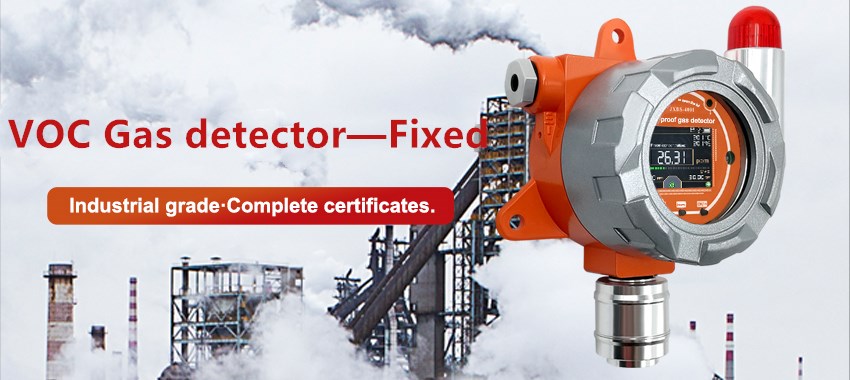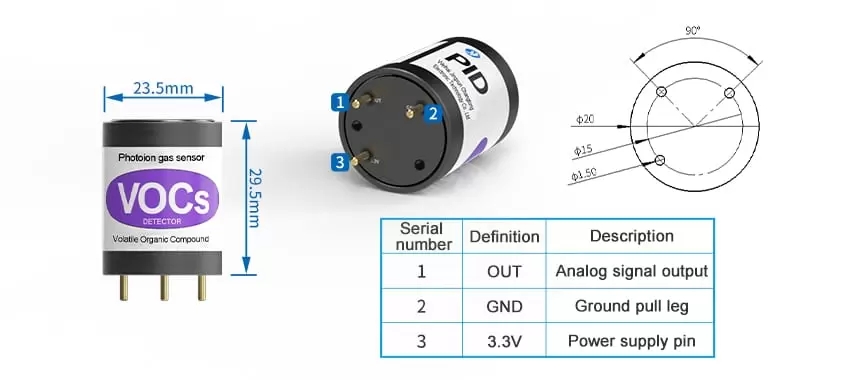Detection of VOCs
VOCs are extensively spread in the environment, causing a threat to human health. Thus, identifying VOC types and concentration are of critical importance in gas detection. The application of MOS-based gas sensors is a common practice due to their low cost, compact size, and high gas sensor response. However, the MOS gas sensors respond to multiple gases, impeding their selectivity. Thus, it is necessary to develop sensitive materials to improve the selectivity of the MOS-based gas sensors.We can use VOC gas sensors for online monitoring.
Although changing the microstructure of gas-sensitive materials, doping with noble metal particles, forming p-n heterojunctions or n-n heterojunctions, compounding with reduced graphene oxide, and preparing multilayer structures were a few attempts to prepare sensitive material, these were selective only to a particular gas. In other words, when the gases are of complex composition, the aforementioned type of sensors cannot identify the gases accurately.
Among MOSs, In2O3 is an excellent gas-sensitive material with a wide bandgap, high electric conductivity, and good doping adaptability. Moreover, surface modification of In2O3 by altering its microstructure can form an effective diffusion channel and obtain a high specific surface area, which can effectively improve the gas sensing performances of sensitive materials. A NiO-based p-type semiconductor has a similar bandgap as In2O3. NiO and In2O3 together form a p-n heterojunction that facilitates the shift in the energy band of In2O3, thus further improving the sensitivity to gases.

gas sensors in VOCs Detection
In the present work, the researchers prepared In2O3 and NiO-In2O3 gas sensors and measured their gas sensing performances. They observed that the response and response time of the NiO-In2O3 gas sensors were excellent and thus were chosen for dynamic measurement. A combined waveform of the rectangular and triangular wave was customized as the heating waveform.
Employing a support vector machine (SVM) as a classifier identified the gas types with 100% accuracy. Principal component analysis (PCA) allowed the team to process the datasets, and quantitative analysis of VOCs using a polynomial fitting resulted in a relative error of 5%. The obtained results indicated that the rectangular-triangular wave temperature modulation and stepwise identification scheme effectively improved the underdeveloped selectivity of gas sensors.
Comparing the gas sensing performances of In2O3 and NiO-In2O3 gas sensors revealed that they have similar optimal operating temperatures. However, In2O3 had a significantly longer response time but shorter recovery time than NiO-In2O3. The team confirmed that the NiO-In2O3 gas sensor enjoys stable performance and superior repeatability and can modulate the periodic temperature.

VOC sensor
The PID photoionization probe& pid sensor realizes rapid detection of VOC gas, is waterproof, easy to clean, durable, multi-range selection, and accurate measurement. PID module is high sensitive and quick react. It can help you alarm the VOC at the first time and make sure your health.When entering VOC gas environment, the response speed is less than 3 seconds and the speed of returning to zero is very fast, It can help you detect VOC immediatly.